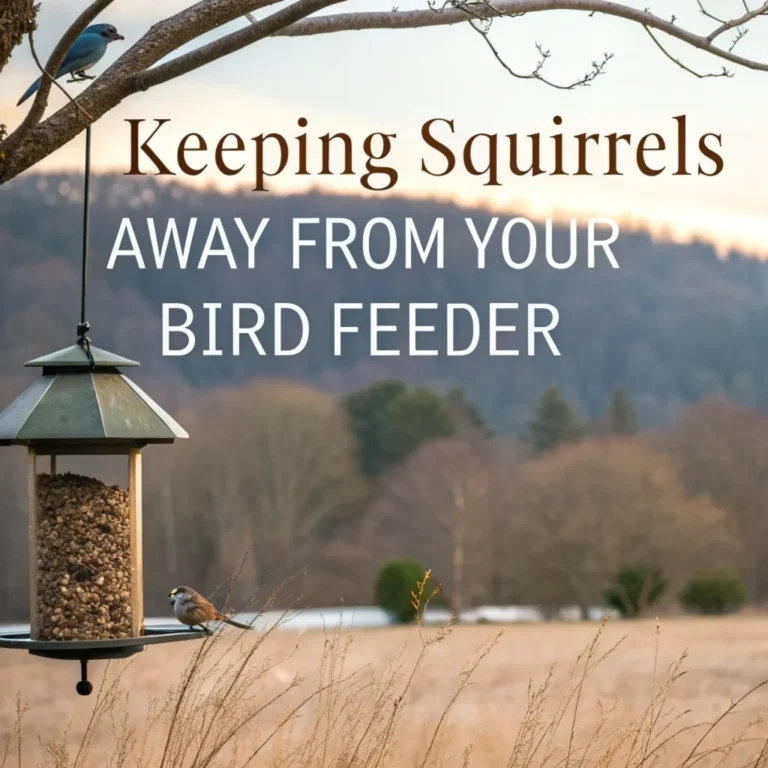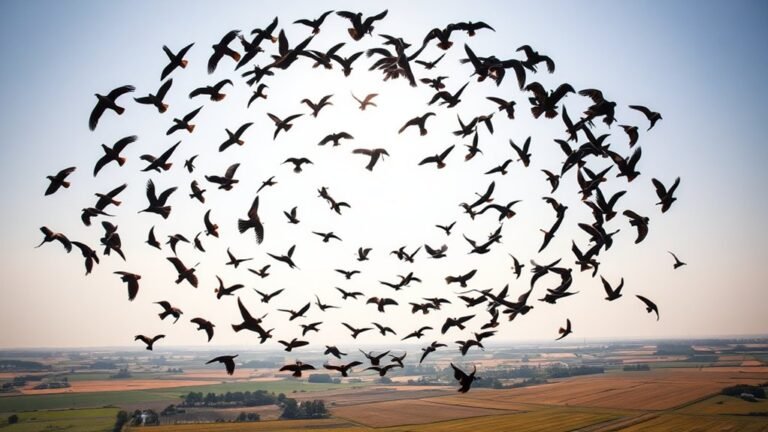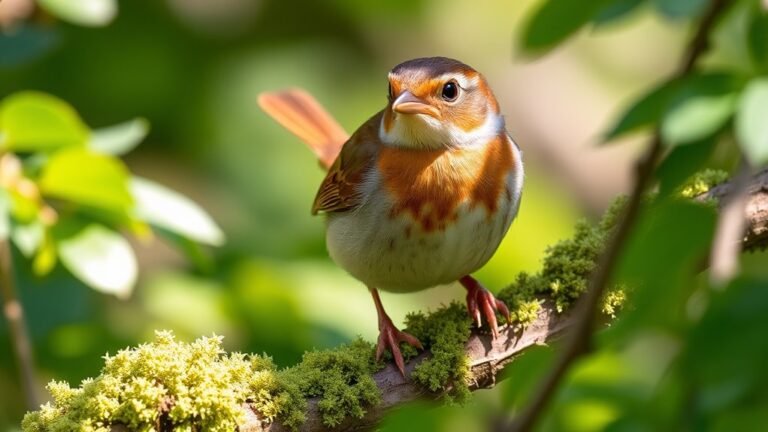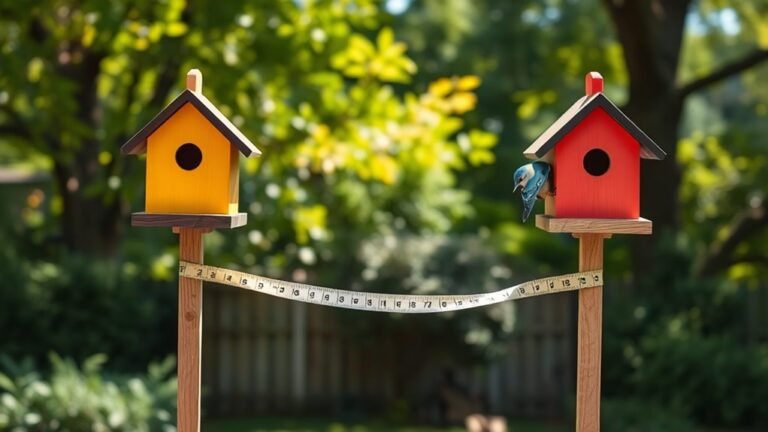Common Birds in South Carolina: A Backyard Guide
If you live in South Carolina, your backyard offers great chances to see lively birds. Knowing the common species can help you enjoy these birds more and improve your birdwatching skills. By observing their habits and needs, you can make your yard a welcoming place for them. Want to know which birds might visit your feeders? Let's look at some popular species you may see.
Key Takeaways
South Carolina has many different habitats that attract various backyard birds, such as songbirds, raptors, and migratory species.
Common backyard birds include Northern Cardinals, Blue Jays, and Carolina Wrens. You can attract these birds by using feeders and planting native plants.
Providing water sources and dense shrubs in your yard helps create better bird habitats and encourages nesting.
Urban birds like House Finches and Mourning Doves adapt easily to human environments, offering enjoyable birdwatching experiences.
Birdwatching connects you to nature and teaches you about local wildlife. It also helps support conservation awareness in your community. Enjoy watching these beautiful birds in your backyard!
Understanding South Carolina's Bird Habitat

South Carolina has many different ecosystems that create diverse bird habitats. The state features coastal wetlands, forests, and grasslands.
These areas support a wide range of bird species, each well-suited to its environment. Coastal wetlands serve as important stopovers for migratory birds. The forests provide nesting sites for songbirds. Grasslands act as vital feeding grounds for raptors and shorebirds.
Understanding these habitats is important for effective conservation efforts. By recognizing how these environments support various bird species, you can help protect them.
Raising awareness about habitat conservation can ensure South Carolina's bird diversity continues to thrive.
Tips for Attracting Birds to Your Backyard
Creating a bird-friendly backyard helps local birds thrive and makes your outdoor space enjoyable. Start by adding bird feeders with seed mixes that appeal to local birds. This will attract various species and let you observe their interesting behaviors.
Include native plants in your yard. These plants provide food and shelter for birds and support the insects that some birds need. Good options include pokeweed, beautyberry, and flowering dogwood. These plants promote a healthy environment.
Don't forget to add a water source, like a birdbath. This will keep birds hydrated and encourage them to visit regularly.
Northern Cardinal: The Bright Red Visitor
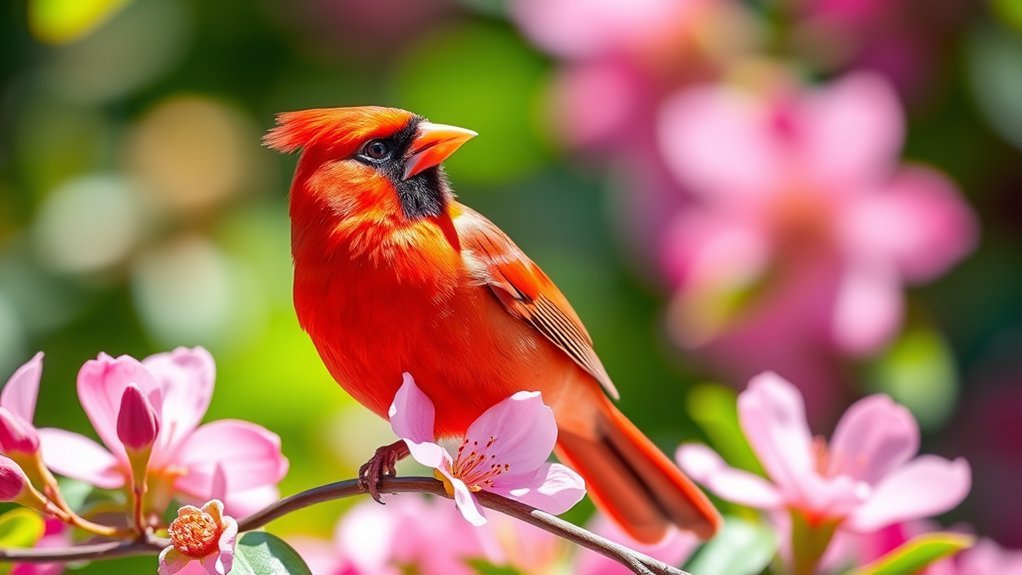
The Northern Cardinal is a well-known bird in South Carolina, recognized for its bright red feathers and cheerful song. You can often see it in your backyard, as it likes bird feeders and shrubs.
Northern Cardinals are interesting because they've strong territorial behavior. They sing to mark their area and show dominance. Their diet includes seeds, berries, and insects, making feeders filled with sunflower seeds very appealing to them.
Male Northern Cardinals are particularly vibrant and often puff up to look bigger during encounters. You can attract these lovely birds to your yard by providing a variety of food and creating dense areas for nesting. This will help create a welcoming space for them in your backyard.
Blue Jay: The Intelligent and Vocal Bird
The Blue Jay is a bird known for its intelligence and loud calls. While other colorful birds may get more attention, the Blue Jay is special.
These birds show smart behaviors. They solve problems to find food and remember where they hide acorns or peanuts. This ability makes them interesting for birdwatchers.
Blue Jays are also skilled at vocal communication. They make many sounds, including sharp calls and mimicry. These sounds warn others of danger and help them find each other.
Watching Blue Jays in your yard can increase your joy in local wildlife. This experience can make you feel more connected to South Carolina's beautiful nature.
Carolina Wren: The Charming Little Singer
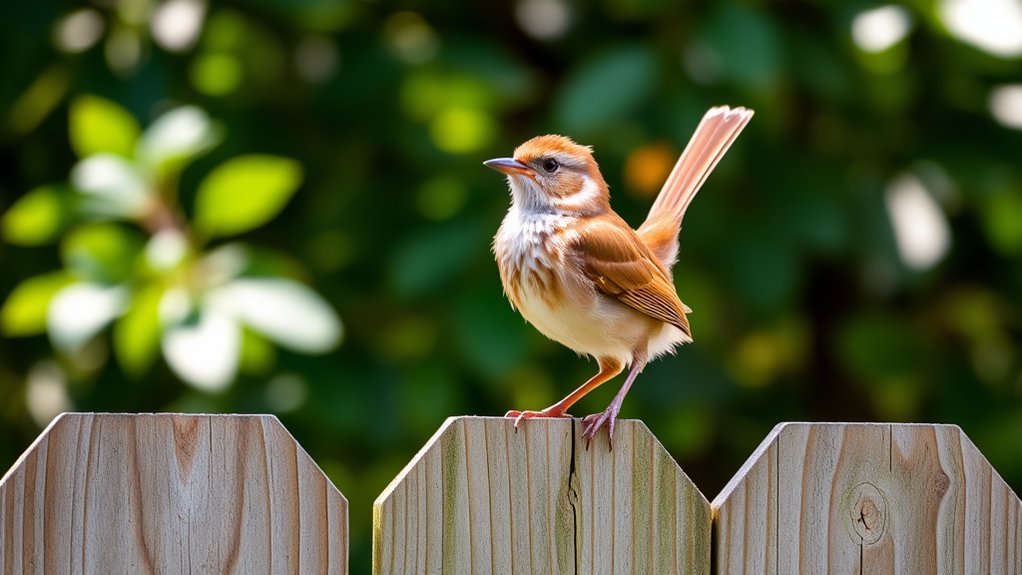
The Carolina Wren has a distinctive song that appeals to both bird watchers and casual fans. This small bird sings cheerful calls, especially in the early morning. Its song is powerful and can lift your mood.
Carolina Wrens are resourceful when it comes to building nests. They usually create snug nests in sheltered places, such as tree branches or planters on porches. These nests consist of twigs, grasses, and other materials, showing their adaptability to urban areas.
You can attract Carolina Wrens to your backyard by providing food and natural cover. Enjoy their enchanting songs and lively presence as they visit your space.
American Goldfinch: The Vibrant Yellow Spectacle
The American Goldfinch is known for its bright yellow color and lively actions.
Bird watchers enjoy watching these friendly birds as they fly in small groups. They perform acrobatic maneuvers that are delightful to see.
Goldfinches mainly eat seeds, especially from sunflowers and thistles. You may see them hanging upside down to reach their food, showing how adaptable they are.
Their cheerful songs add to the experience, making your backyard more lively. Watching these birds helps you connect with nature and creates a sense of community with other bird lovers.
Eastern Bluebird: A True Beauty in the Garden
Eastern Bluebirds are beautiful birds known for their bright blue feathers and rust-colored chests. They often perch on fence posts or low branches while looking for insects. Their cheerful calls fill the air, delighting birdwatchers and creating a sense of connection among nature lovers.
These birds also bring joy to your garden when they nest. Eastern Bluebirds prefer nesting in cavities in dead trees or in birdhouses made for them. You can easily set up a comfortable birdhouse.
The female will carefully build her nest and lay three to six eggs. Both parents share the job of feeding their chicks. By attracting Eastern Bluebirds, you'll create a welcoming space that helps you appreciate the beauty of nature.
House Finch: The Adaptable Backyard Resident
House Finches thrive in urban areas, making them one of the most common backyard birds in South Carolina. You can see them often near feeders or hear them chirping in trees. Their friendly behavior attracts many bird watchers.
Here are some key features of House Finches:
- Diet Diversity: House Finches eat seeds, fruits, and even food scraps from humans.
- Vocalizations: Male House Finches sing melodic songs, while females produce softer chirps.
- Breeding Habits: They build nests in various places, including hanging planters and ledges.
- Color Variation: Males have bright red markings, while females have a more muted appearance.
Having House Finches in your backyard brings color and life to your space. They offer a charming glimpse into their behaviors and habits, enhancing your outdoor experience.
Red-tailed Hawk: The Majestic Raptor
The Red-tailed Hawk is one of South Carolina's most recognizable raptors. It has a reddish-brown tail and a wingspan of up to four feet, which helps it fly gracefully.
These hawks hunt by soaring high to see their prey. They dive down to catch small mammals and birds with great skill, relying on their sharp vision.
For nesting, Red-tailed Hawks choose tall trees or cliffs. They build large nests made of sticks and often use the same nest year after year, showing their commitment to family.
Watching these beautiful birds can enhance your experience in nature, creating a stronger bond with the outdoors.
Mourning Dove: The Gentle Coos of Nature
Mourning Doves are common birds in South Carolina. You can often see them on power lines or searching for food on the ground. Their soft coos create a calm atmosphere in your backyard. Watching them helps you connect with nature and understand their behaviors.
- Mourning Doves build their nests in shrubs or trees using twigs and grasses.
- They perform a unique courtship dance, involving quick, fluttering flights.
- These birds are generally calm and allow people to approach them closely.
- They look for seeds on the ground, showing their ability to adapt to different environments.
Learning about mourning doves enhances your backyard experience and helps you feel more connected to the local wildlife.
Enjoy observing these gentle creatures and the tranquility they bring.
Downy Woodpecker: The Small but Mighty Drummer
The Downy Woodpecker is a small bird that adds charm to South Carolina's forests. This bird prefers areas with many trees, such as deciduous woodlands, suburban yards, and parks. It finds food by searching for insects in the bark of trees.
The Downy Woodpecker is known for its distinctive habit of tapping on tree trunks. This drumming serves a purpose, as it helps the woodpecker communicate with others and mark its territory.
Watching the Downy Woodpecker brings joy and showcases nature's beauty. Its adaptability allows it to thrive in various settings, making it a delightful addition to any backyard.
Observing this lively bird reminds us of the simple wonders found in our communities.
Ruby-throated Hummingbird: The Tiny Marvel
Ruby-throated Hummingbirds are a fascinating part of South Carolina's bird population.
These small birds capture the attention of nature enthusiasts. Here are some key details about them:
- Size and Color: Adults measure about 3 to 5 inches long. They've a shiny green back and a bright ruby-red throat.
- Feeding Habits: These birds love flower nectar. Their favorites include trumpet creepers, bee balm, and columbine.
- Aggressive Nature: Males are known to aggressively defend their feeding areas, showing their spirited personalities.
- Migration Patterns: They migrate long distances from North America to Central America every year.
Observing Ruby-throated Hummingbirds can enrich your connection with nature and local wildlife.
Tufted Titmouse: The Friendly Backyard Companion
The Tufted Titmouse is a charming bird often seen in South Carolina's backyards. This small, gray bird has a distinctive crest and friendly social behavior. You can find them in small groups, visiting bird feeders. They enjoy a variety of foods, such as seeds, nuts, and insects.
These birds display impressive acrobatic skills as they hang upside down to access food. Their cheerful calls sound like "peter-peter-peter," creating a welcoming ambiance in your outdoor space.
When they discover a food source, they often call other titmice to join them, highlighting their social nature. The presence of Tufted Titmice can bring a sense of community to your backyard, making your outdoor experiences more enjoyable.
Their lively antics and vocalizations add charm and delight to any garden setting.
Common Grackle: The Social and Shimmering Flock
The Common Grackle is a social bird that stands out in South Carolina. They form large flocks that create lively scenes in yards and parks.
Here are some key characteristics of their flock behavior:
- Vocalizations: Grackles use various calls to communicate within their groups.
- Feeding Strategies: They forage together, working as a team to find food.
- Protective Behavior: A united flock helps protect against predators, increasing survival chances for each bird.
- Courtship Displays: Male grackles perform rituals to attract mates, displaying their shiny feathers.
These traits make Common Grackles interesting to observe and appreciate in your area. Their social nature and beautiful appearance add charm to local environments.
Frequently Asked Questions
What Time of Year Do Birds Migrate in South Carolina?
Birds in South Carolina migrate during spring and fall. They change their location when temperatures change. In spring, many birds travel north to their breeding grounds. In fall, they head south to find warmer weather and food. You can observe these migration patterns as the seasons shift.
How Can I Identify Bird Calls and Songs?
To identify bird calls and songs, listen carefully. Use audio resources to compare different sounds. Pay attention to patterns in the calls. Practice often; the more you listen, the better you will recognize and remember them. Enjoy the experience of connecting with nature through its sounds.
Are There Any Endangered Bird Species in South Carolina?
South Carolina has several endangered bird species. One notable example is the Red-cockaded Woodpecker. Efforts to protect these birds focus on preserving their habitats and raising awareness about their needs. You can help by supporting these conservation initiatives. Your actions can contribute to the survival of these vulnerable birds.
What Plants Attract the Most Birds to My Backyard?
To attract more birds to your backyard, use native plants and a variety of seeds. Native plants offer natural food and shelter, creating a welcoming environment for different bird species. Additionally, providing diverse seeds can cater to various bird preferences. This combination helps you build a lively habitat that birds will love. Enjoy watching the visitors your garden attracts!
How Can I Help Injured or Orphaned Birds?
To help injured or orphaned birds, contact local wildlife organizations. They provide guidance on rehabilitation methods. This helps ensure the birds receive the right care and boosts their chances of surviving. Your willingness to help is important.

Ava is a bird enthusiast and nature lover who has spent countless hours observing and learning about the fascinating world of birds. With a passion for sharing her knowledge and inspiring others to appreciate the beauty of birds, Ava writes about her experiences and insights on avianadmirer.com.


